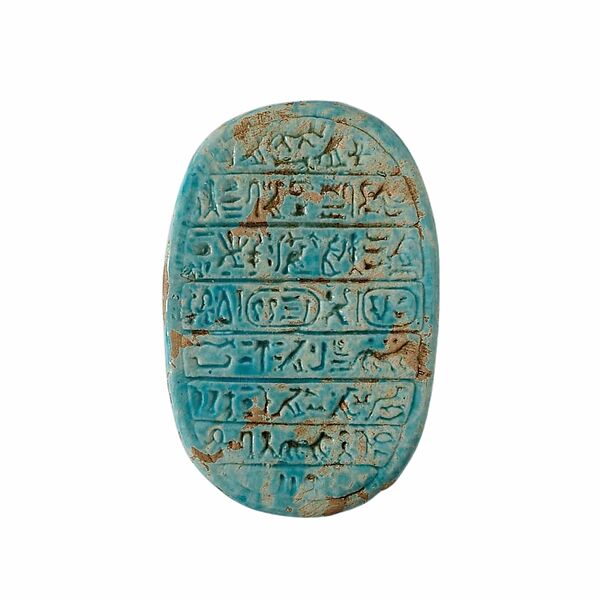Description
A little history about the Egyptian Scarab Back:The scarab was one of the sacred animals of the ancient Egyptians. For them, everything around them had a role in the world of the living. Their attitudes and behaviour revealed the "mechanics" of the universe. The dung beetle, by pushing a ball of excrement with its hind legs in which it laid its eggs, particularly in the early hours of the day, was thus assimilated to the sun god, reborn from the darkness.
He was thus venerated under the name of Kepry, symbol of eternal rebirth. For this reason, every Egyptian wore the scarab as an amulet. They have been found in wood, ivory, precious stones, terracotta glazed with Egyptian blue, and gold. Pharaoh Amenhotep III had several hundred thousand of them distributed
thousands of them throughout Egypt for the jubilee of his reign.
At the time of embalming, the priests inserted a scarab between the strips to ensure the rebirth of the king.

